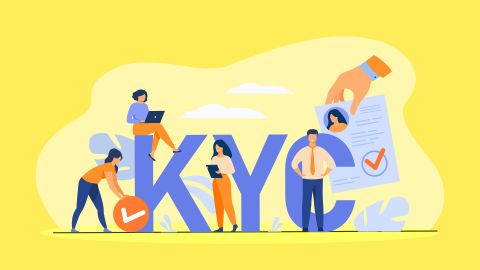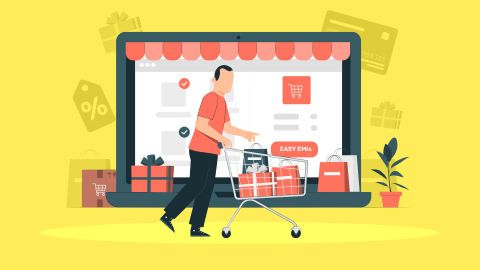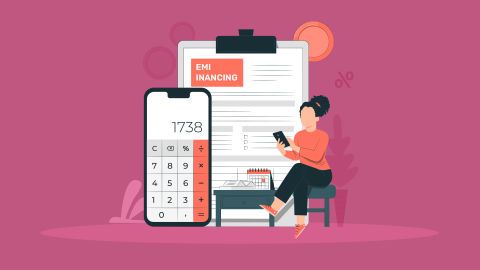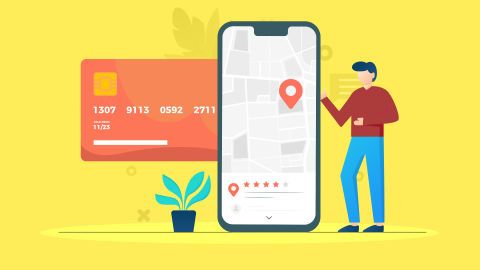Are you confused about the difference between iPad and tablet options in the market? Many people wonder what sets Apple's popular device apart from other tablets. The difference between iPad and tablet devices matters when you are planning to invest in a new gadget.
Both iPads and tablets offer portable computing, but they differ in operating systems, app availability, performance, and price. Whether you need a device for work, entertainment, or education, understanding these differences will help you make the right choice.
This article will explore the key distinctions between iPads and tablets, examining their strengths, weaknesses, and ideal use cases. We will also explain how you can purchase either option using the Bajaj Finserv Insta EMI Card, making your dream device more affordable through convenient EMI payments.
What is an iPad?
An iPad is a specific type of tablet manufactured exclusively by Apple. It runs on iPadOS, which is Apple's tablet-specific operating system designed for touch interfaces. The iPad offers a premium experience with high-quality displays, powerful processors, and access to Apple's carefully curated App Store.
iPads come in several variants including the standard iPad, iPad Air, iPad Pro, and iPad Mini. Each model targets different user requirements and budgets, from casual browsing to professional-grade creative work. The tight integration between Apple hardware and software results in smooth performance and long-term software support.
What is a tablet?
A tablet is a portable computing device with a touchscreen display that serves as the primary input method. Unlike iPads that come only from Apple, tablets are produced by numerous manufacturers including Samsung, Lenovo, Xiaomi, and many others. Most non-Apple tablets run on Android operating system, while some use Windows.
Tablets range widely in specifications, build quality, and price points. They typically offer flexibility in terms of storage expansion, customisation options, and connectivity with various ecosystems. Tablets are designed for similar functions as iPads — web browsing, media consumption, gaming, and productivity tasks.
Key differences between iPad and tablet
| Feature | iPad | Other tablets |
| Operating system | iPadOS (Apple's exclusive system) | Android or Windows |
| Manufacturer | Only Apple | Multiple companies (Samsung, Lenovo, etc.) |
| App marketplace | Apple App Store | Google Play Store or Microsoft Store |
| Price range | Generally higher starting price | Available across all price segments |
| Build quality | Consistent premium construction | Varies from budget to premium |
| Processor | Apple A-series or M-series chips | Various chipsets (Snapdragon, MediaTek, etc.) |
| Software updates | Longer support period (5+ years) | Typically shorter update cycles (2-3 years) |
| Storage expansion | No microSD card support | Often includes expandable storage |
iPad strengths
- Superior ecosystem integration: iPads work seamlessly with other Apple devices through features like AirDrop, Handoff, and iCloud synchronisation.
- Optimised applications: Many apps are specifically designed for iPad screens and capabilities, resulting in better user experiences.
- Consistent performance: The combination of Apple hardware and software creates reliable performance even in older models.
- Premium build quality: iPads feature high-quality materials and construction techniques that contribute to their durability and premium feel.
- Professional creative tools: iPad Pro models with Apple Pencil support excel for artists, designers, and creative professionals with exclusive apps like Procreate
iPad weaknesses
- Higher price point: iPads typically cost more than comparable Android tablets with similar specifications.
- Limited customisation: Apple restricts certain aspects of customisation to maintain consistent user experience.
- No expandable storage: Users must purchase models with sufficient built-in storage as iPads lack microSD card slots.
- Expensive accessories: Official accessories like Apple Pencil and Magic Keyboard add significant costs to the overall investment.
- Closed ecosystem: iPads work best within Apple's ecosystem, potentially limiting compatibility with non-Apple devices.






